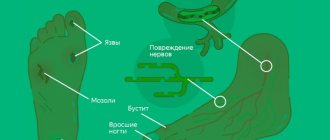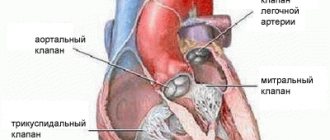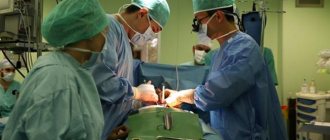Congenital heart defects
They are formed in utero. About 2% of children are born with various PS: from mild to severe, incompatible with life. The main reasons for their development:
- chromosomal abnormalities (Down syndrome, Patau);
- the effect of alcohol, nicotine, and drugs on the fetus;
- infection of the mother during pregnancy with rubella viruses, herpes simplex, chickenpox, cytomegalovirus, toxoplasma;
- maternal diabetes;
- exposure to radiation on a pregnant woman;
- taking certain medications during pregnancy (tetracycline, sulfonamide, antitumor antibiotics).
Drug treatment of acquired heart defects
Such treatment can be carried out at the stage of formation of the defect. The following medications are prescribed:
- anti-inflammatory drugs that can stop the rheumatic process;
- antibiotics, they have a similar effect to anti-inflammatory drugs;
- cardiac glycosides, they are prescribed individually for weak contractile function;
- inhibitors aimed at normalizing blood pressure in the main arteries;
- B-adrenergic blockers, slow down the heart rate;
- preparations containing magnesium;
- diuretics, reduce swelling and congestion in the cardiovascular system;
- antiplatelet agents and anticoagulants thin the blood to minimize the risk of clotting and thrombosis.
Drug treatment of acquired defects is usually prescribed to stabilize rhythms and treat the underlying disease and its complications.
Acquired heart defects
They develop throughout life for the following reasons:
- rheumatism ー damage to the connective tissue by one’s own antibodies that are produced against streptococci (develops in some children after scarlet fever or streptococcal tonsillitis);
- bacterial endocarditis - inflammation of the inner lining of the heart, leading to changes in the valves;
- atherosclerosis - deposition of cholesterol plaques in the walls of blood vessels;
- degenerative changes in valves - typical for older people, caused by tissue wear;
- damage to the aorta, valve apparatus due to syphilis and autoimmune diseases.
Clinic, diagnosis and treatment of mitral heart defects
Acquired heart defects, valvular defects, are a violation of the anatomical structure and function of the heart, caused by morphological changes in one or more of its valves. Valve changes can be in the form of stenosis, insufficiency, or a combination of both; they are the result of infection, inflammation or autoimmune reactions, overload and dilatation of the heart chambers. In the presence of several defects at the same time, the terminology means: “combined” - simultaneous damage to one valve (stenosis and insufficiency); “combined” - damage to several valves. In case of combined defects and a greater degree of severity of one of them, it should come first in the diagnosis [2].
The following varieties are distinguished:
1. Monovalvular defects (one valve is affected): mitral, aortic, tricuspid.
2. Combined defects (two or more valves are affected): two-valve, mitral-aortic, aortic-mitral, mitral-tricuspid, aortic-tricuspid, three-valve, aortic-mitral-tricuspid, mitral-aortic-tricuspid.
The development of mitral heart disease is observed most often. In rheumatic endocarditis, the mitral valve is most often affected (up to 96% of all cases), less often - the aortic valve, and even less often - the tricuspid valve [5].
Mitral regurgitation (MR, mitral regurgitation) is a condition characterized by incomplete closure of the mitral valve leaflets during left ventricular systole, accompanied by backflow of blood from the left ventricle into the left atrium during this phase, and therefore, volume overload of the left atrium and left ventricle. Usually the disease is asymptomatic for many years, but ultimately leads to CHF [1].
MR is the second most common valvular heart disease (after aortic stenosis), its frequency in developed countries is 5:10,000.
The cause of the development of MR in 75% of cases is rheumatism (rheumatic heart disease), much less often - infective endocarditis, atherosclerosis of the valve. Sometimes MN occurs in systemic lupus erythematosus, systemic scleroderma, dermatomyositis, rheumatoid arthritis, and mitral valve prolapse due to degeneration or weakening and stretching of the papillary muscles due to ischemia, hypertrophic cardiomyopathy, and Marfan syndrome. Any significant dilatation of the left ventricle, for example in hypertension, dilated cardiomyopathy, aortic defects, can lead to relative mitral regurgitation [3].
Symptoms of heart defects
Impaired hemodynamics (blood circulation) leads to a lack of blood supply to some organs and venous stagnation in others. The heart has to work harder to pump blood, it increases in size, this temporarily compensates for the pathology, symptoms do not appear. But over time, compensatory reserves are depleted, the heart muscle stretches, weakens and can no longer effectively perform its job.
This gives rise to a number of typical signs:
- shortness of breath (at the initial stages after physical activity, then at rest);
- dizziness, fainting;
- cyanosis of the nasolabial triangle, mucous membranes, fingertips;
- swelling in the legs (appears in the evening, disappears in the morning);
- symptom of “drumsticks” - club-shaped expansion of the fingertips (appears with a long course of the disease);
- rosy cheeks against a background of general pallor ー mitral face (with mitral stenosis).
If such symptoms appear, you should contact a cardiologist for further diagnosis.
Surgery
It is carried out in cases where the patient has a subcompensated or decompensated heart defect. Depending on the indications, a suitable technique is selected from the following possible ones:
- Plastic surgery;
- valve-saving;
- angioplastic.
In severe cases, valve replacement may be required, which involves the installation of a mechanical or biological prosthesis. If necessary, aortic root reconstruction, atrioplasty, or restoration of normal rhythm can be performed.
All patients who have undergone surgery must undergo a rehabilitation course. It may consist of physical therapy, breathing exercises, and medication. During the rehabilitation period, tests and studies are carried out to monitor the patient’s well-being. This is especially necessary when using indirect coagulants in the postoperative period.
Classification of heart defects
| Type | Name |
| Congenital | |
| Without the development of cyanosis (pale type) | Defects of the interventricular and interatrial septa |
| Patent ductus arteriosus | |
| Pulmonary stenosis | |
| Coarctation of the aorta | |
| With the development of cyanosis (blue) | Transposition of the great vessels |
| Common ventricle | |
| Tetralogy of Fallot | |
| Purchased | |
| Mitral valve (between the left atrium and ventricle) | Mitral stenosis |
| Mitral regurgitation | |
| Tricuspid valve (between the right atrium and ventricle) | Tricuspid valve stenosis |
| Tricuspid valve insufficiency | |
| Aortic valve (between the left ventricle and the aorta) | Aortic stenosis |
| Aortic insufficiency | |
| Pulmonary valve | Pulmonary valve stenosis |
| Pulmonary valve insufficiency | |
Stenosis
called narrowing of the valve opening, which causes difficulty in blood flow.
Insufficiency
ー inability of the valves to close tightly. In people with valve stenosis, valve insufficiency develops over time - this is called combined PS.
Coarctation of the aorta
- narrowing of the lumen of the aorta, in the area of the isthmus - the transition of the arch to the descending part.
Transposition of the great vessels
- the aorta originates from the right parts of the heart, and the pulmonary artery - from the left (it should be the other way around).
Tetralogy of Fallot
— combines four critically dangerous disorders: stenosis of the outflow tract of the right ventricle, ventricular septal defect; dextroposition of the aorta and hypertrophy (enlargement) of the right ventricular myocardium
Causes
The reasons that cause one or another type of a given defect may differ.
Reasons for the development of the congenital type:
- heredity;
- genetic predisposition;
- the influence of various negative environmental factors on a pregnant woman;
- smoking and drinking alcohol by the expectant mother during pregnancy (especially in the first trimester);
- difficult pregnancy, complicated by severe toxicosis.
Experts identify a number of factors that can lead to the emergence of an acquired form of pathology:
- rheumatism (in 90% of cases);
- bacterial protracted endocarditis;
- scarlet fever;
- various types of valve injuries;
- mitral stenosis;
- tricuspid stenosis;
- hypervolemia of the pulmonary circulation.
Heart defects in children
Congenital PS, depending on the severity, can manifest themselves in the first 3 years of a child’s life. Sometimes they are detected already in adulthood. The following signs indicate their possible presence:
- blue lips and nasolabial triangle when crying;
- the appearance of a “heart hump” - a bulge of the chest in the projection of the heart;
- shortness of breath, cough without signs of inflammatory diseases of the respiratory tract;
- delayed physical and mental development;
- the appearance of the “drumsticks” symptom.
Children with such manifestations should be shown to a pediatrician or pediatric cardiologist.
In the children's department, medical appointments are conducted by doctors who have undergone special training to identify health problems in children and infants, taking into account all age-related characteristics.
Main causes of PPP
The following conditions may act as etiological factors for acquired heart defects in adults and children:
- Bacterial endocarditis. One of the outcomes of this disease, manifested by inflammatory processes in the endocardium, is the formation of heart defects.
- Rheumatism. An acute inflammatory disease of a systemic nature, mainly affecting the articular and cardiovascular systems. The cardiac form of rheumatism is explained by the toxic effect of streptococcal enzymes (the causative agent of this disease) and the formation of autoimmune reactions that affect the endocardium and myocardium.
- Syphilis. One of the manifestations of this systemic disease is damage to the valvular apparatus of the heart and aorta.
- Atherosclerosis. A chronic pathology manifested by the formation of plaques on the walls of blood vessels, causing them to narrow.
- Injuries. The outcome of bruises and wounds of the heart can be formed defects.
- Sepsis. Any generalized infection can lead to disruption of the heart valve apparatus.
Separately, it should be said about acquired heart defects and pregnancy. In the second and third trimesters, expectant mothers have an increased risk of exacerbation of chronic pathologies. Therefore, pregnancy may also be one of the factors that increases the likelihood of the formation of valvular lesions.
Prevention of acquired heart defects
Measures to prevent the development of acquired heart defects include the prevention of rheumatism, septic conditions, and syphilis. For this purpose, sanitation of infectious foci, hardening, and increasing the body's fitness are carried out.
In case of mature heart disease, in order to prevent heart failure, patients are advised to follow a rational motor regimen (hiking, therapeutic exercises), nutritious protein nutrition, limiting the intake of table salt, avoid sudden climate changes (especially high-altitude ones) and active sports training.
In order to monitor the activity of the rheumatic process and compensation of cardiac activity in case of heart defects, clinical observation by a cardiologist is necessary.






